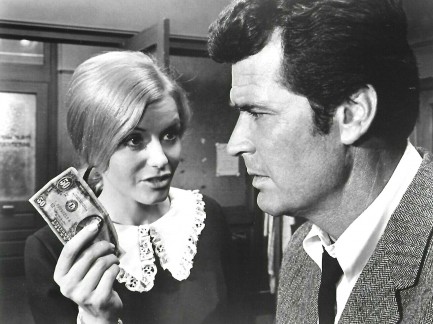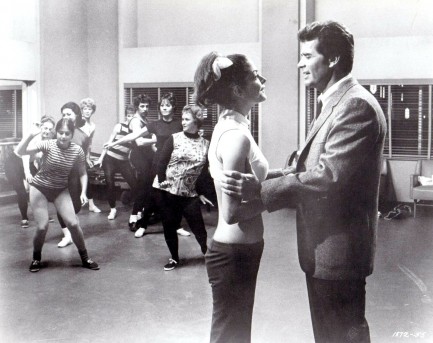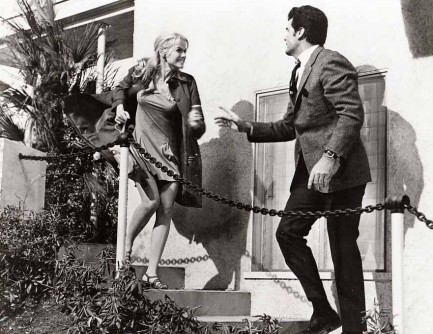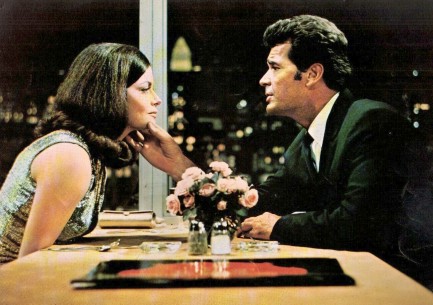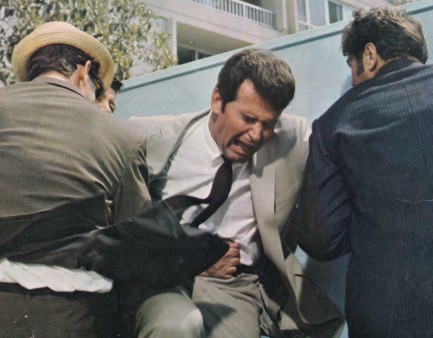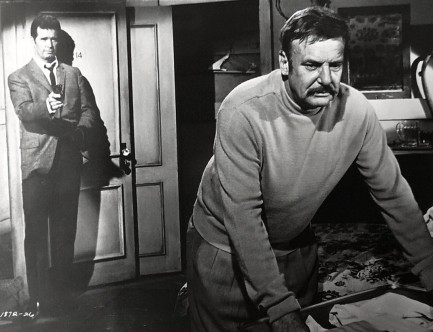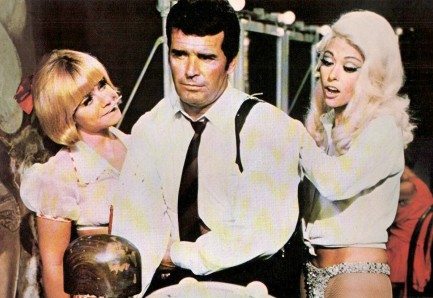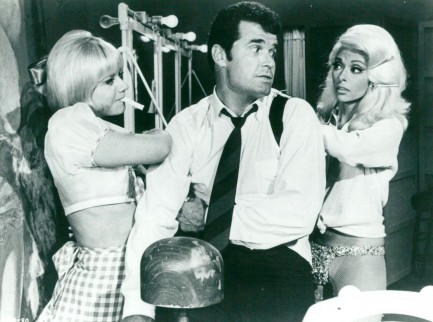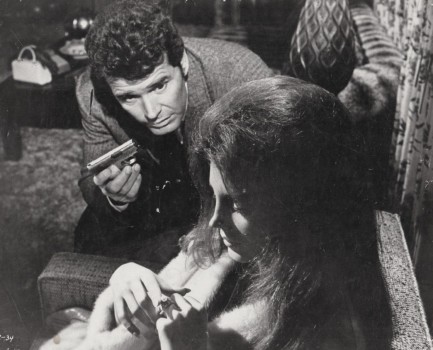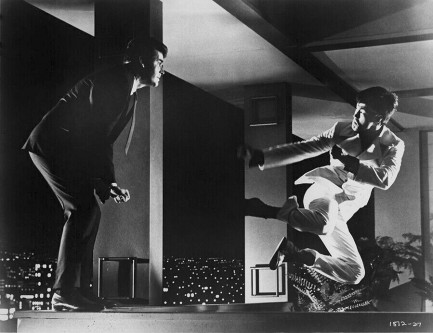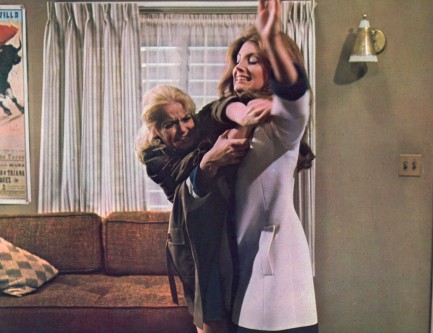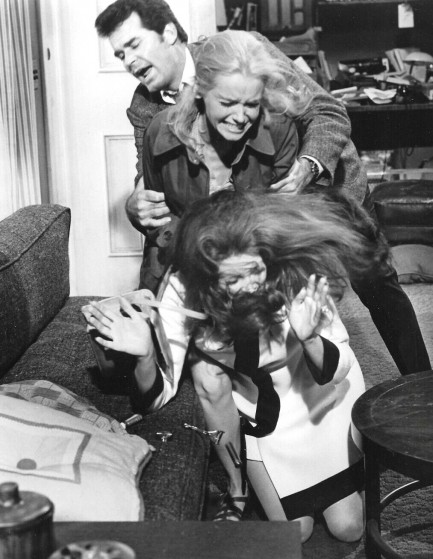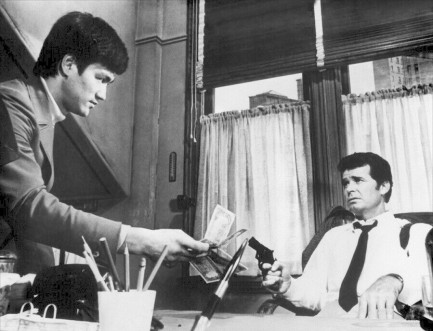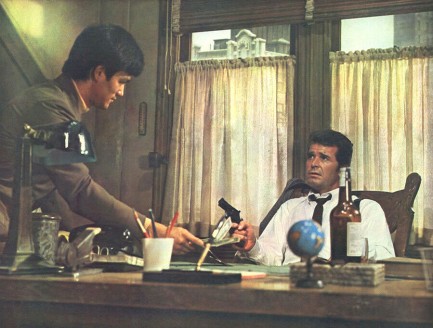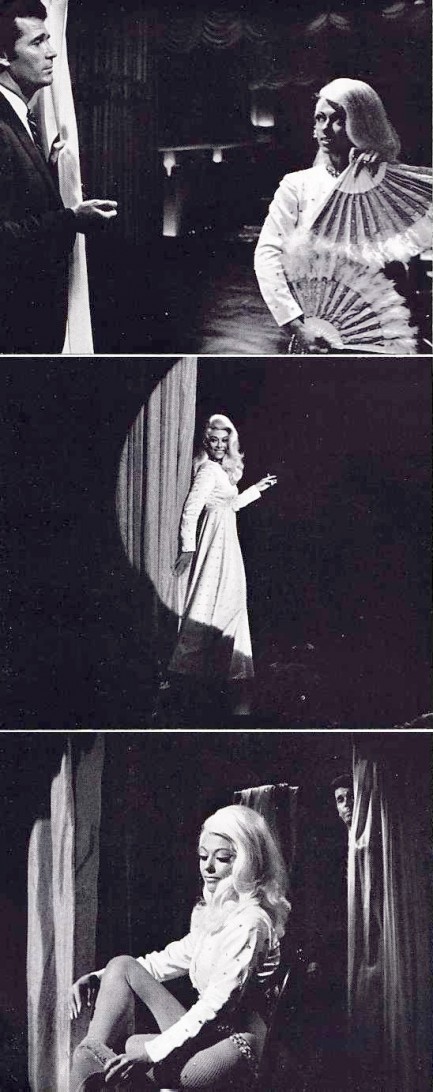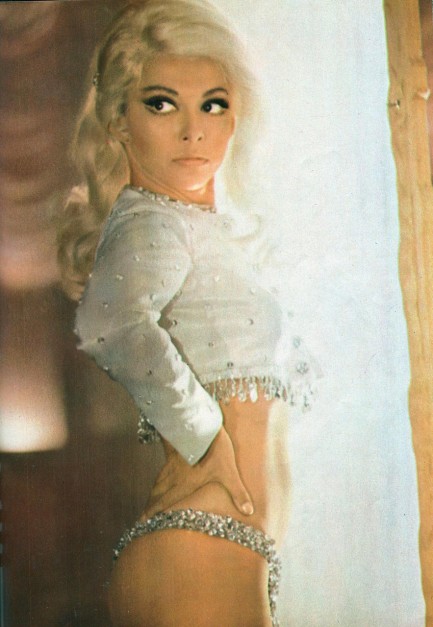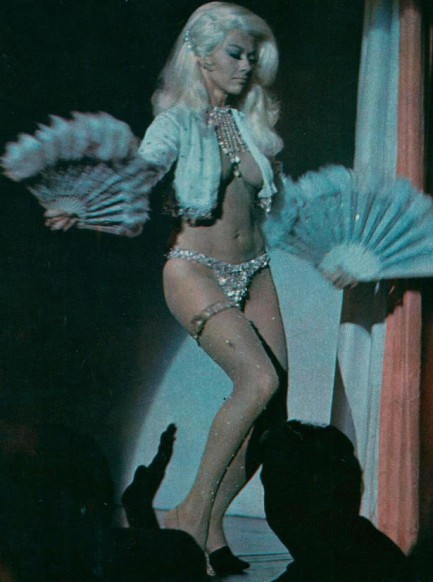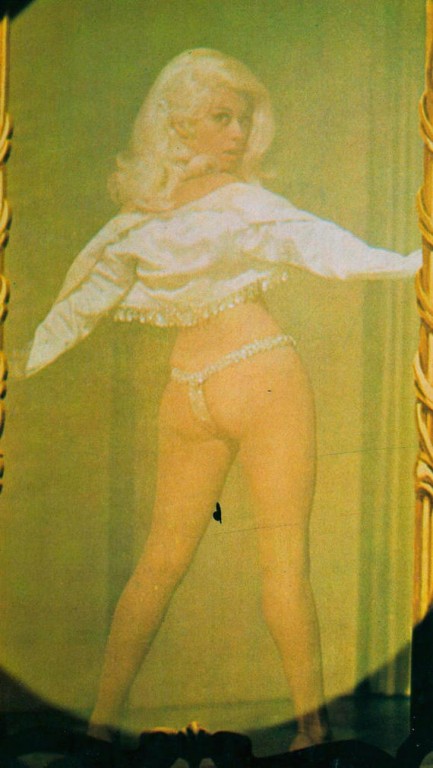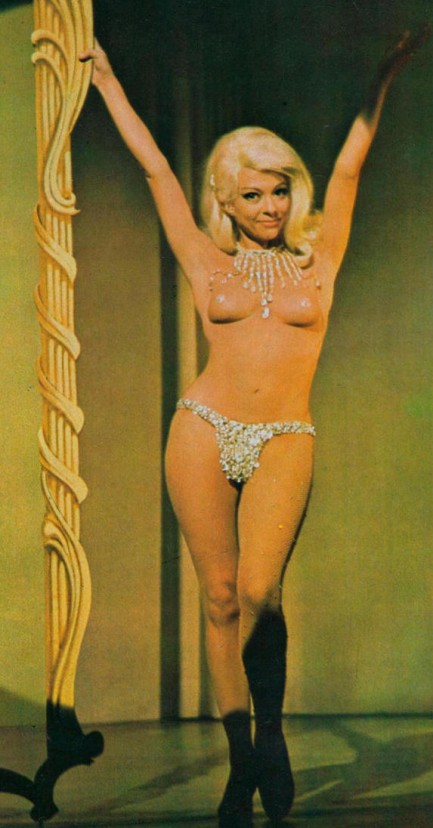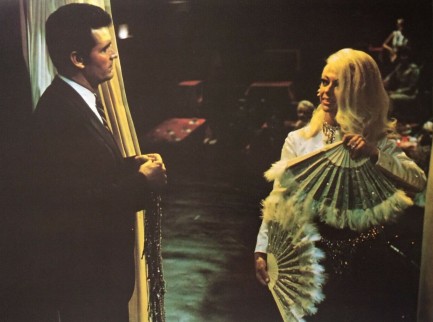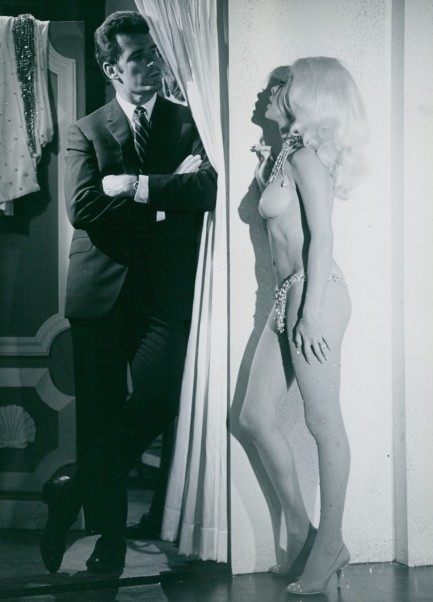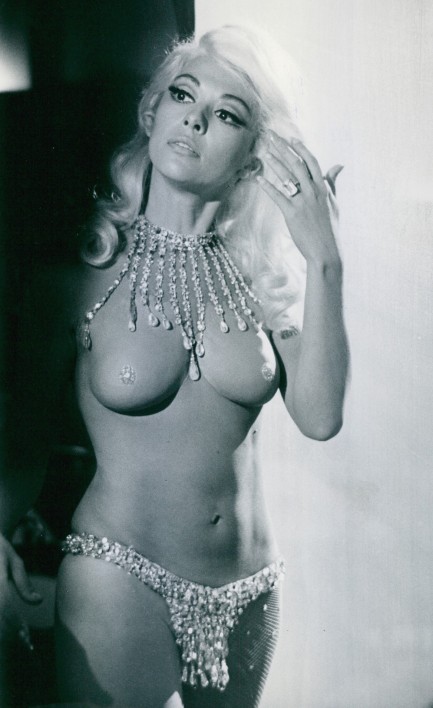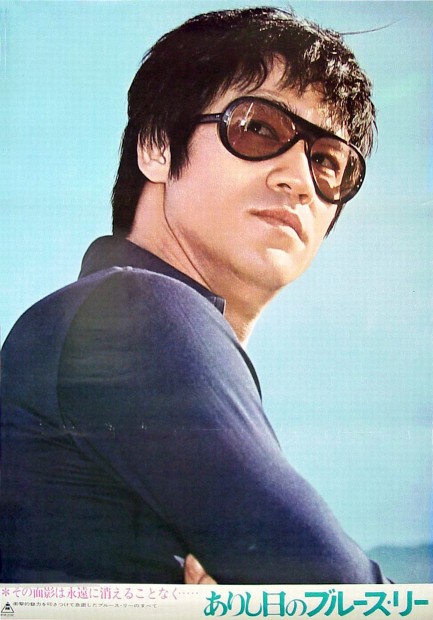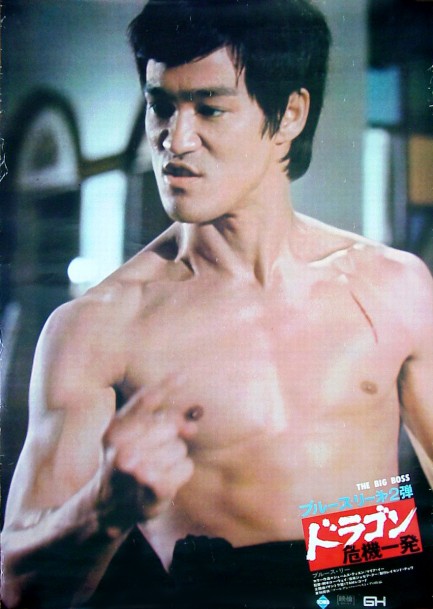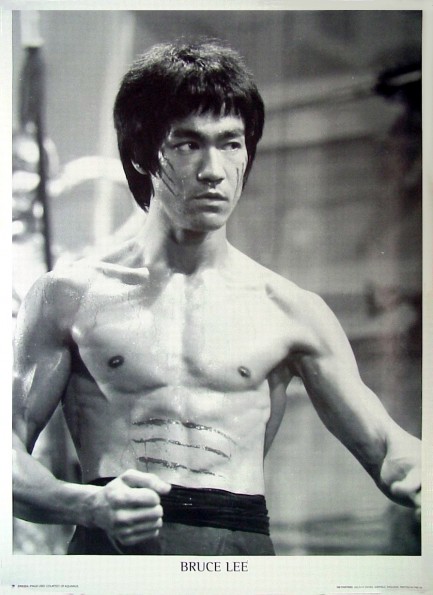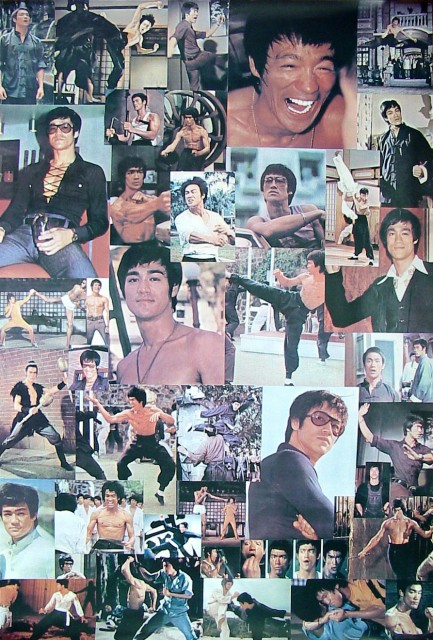 The return of the dragon. 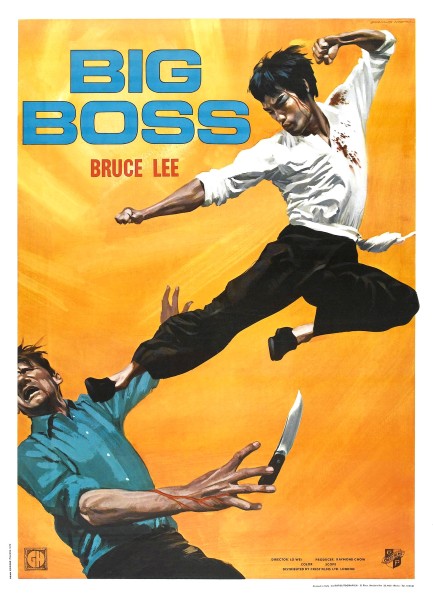 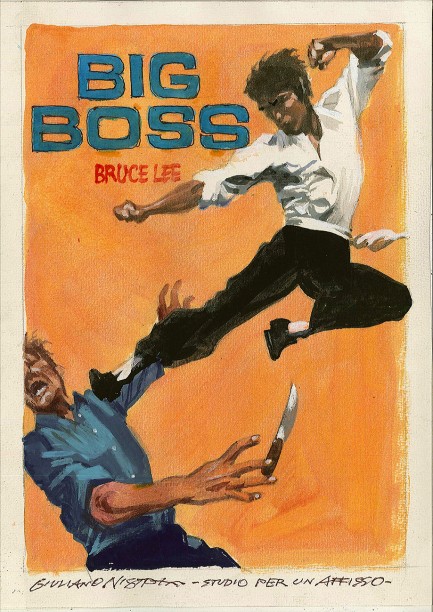
A while back we shared two Italian posters for the Hong Kong action flick Tang shan da xiong, aka The Big Boss. Those were painted by Averado Ciriello, and one of them, with star Bruce Lee depicted as moving so fast he had seven blurry arms, brought to mind those moments in The Matrix when Neo and Mr. Smith fight at mindbending speed. We're looking today at more art from the movie. The above efforts—a finished poster and a preliminary study—were painted by Italian artist Giuliano Nistri for the film's British release by Crest Films. We included the study because we wanted to highlight a website that you should visit, where you can see more of the same and gain a greater appreciation for Nistri's work. It's at this link. Tang shan da xiong premiered in England today in 1971.
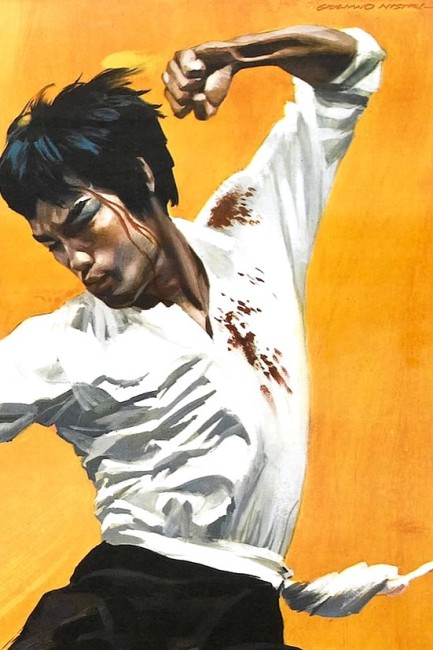
 Garner's portrayal of a classic detective feels a lot like a Rockford Files test run. 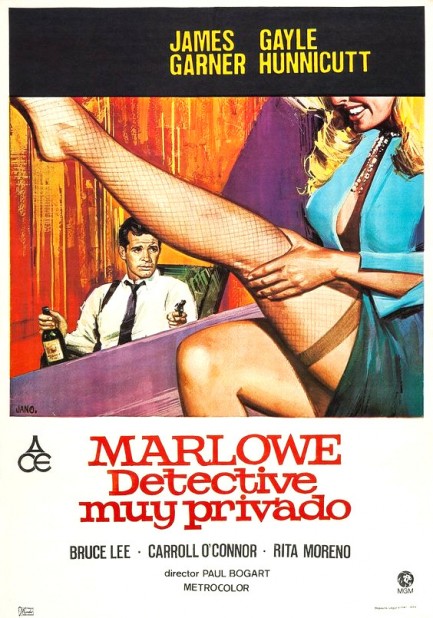
Raymond Chandler's novels have been adapted to the screen several times. One of the lesser known efforts was 1969's Marlowe, which was based on the 1949 novel The Little Sister and starred future Rockford Files centerpiece James Garner as Chandler's famed Philip Marlowe. You see a cool Spanish popster for the movie above, painted by Fernandez Zarza-Pérez, also known as Jano. As usual when we show you a foreign promo for a U.S. movie, it's because the domestic promo isn't up to the same quality. In this case the U.S. promo is almost identical, but in black and white. The choice was clear.
Since you know what to expect from a Chandler adaptation, we don't need to go into the plot much, except to say it deals with an icepick murderer and ties into show business and blackmail. What's more important is whether the filmmakers made good use of the original material, either by remaining true to its basic ideas or by imagining something new and better. They weren't going for new in this case. They were providing a vehicle for the charismatic Garner and ended up with a movie that features him in the same mode he would later perfect in Rockford.
Marlowe has a few elements of note. Rita Moreno plays a burlesque dancer, and it's one of her sexier roles. Bruce Lee makes an appearance as a thug named Winslow Wong. Garner is the star, so it isn't a spoiler to say that Lee doesn't stand a chance. He's dispatched in unlikely but amusing fashion. Overall, Marlowe feels like an ambitious television movie and plays like a test run for Rockford, but it's fun stuff. We recommend it for fans of Chandler, Moreno, Lee, Carroll O'Connor (who co-stars as a police lieutenant), and especially Garner. It premiered in the U.S. in 1969, but didn't reach Spain until today in 1976.
 You moved like they do. I've never seen anyone move that fast. 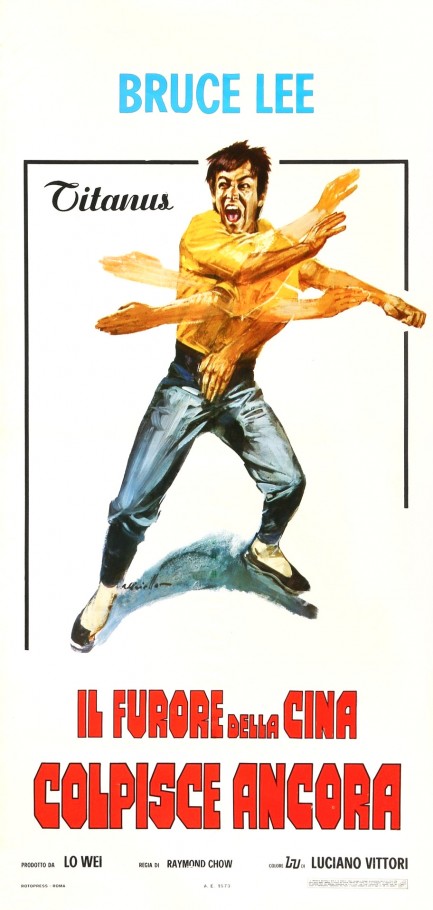
Usually when we share a foreign poster for a film it's because the foreign version is markedly better. The original poster for Bruce Lee's Hong Kong-produced martial arts thriller Tang shan da xiong is actually pretty nice, but the Matrix-like motion capture attempt on this Italian version is just too cool to ignore. In Italy the film was titled Il furore della Cina colpisce ancora, or “China's fury strikes again,” and the art is by Averado Ciriello. It's an inspired effort, which he almost equals on version two, at bottom. There are also two Japanese posters at this link, and it's here that we mention that the movie was titled in English The Big Boss and Fists (not Fist) of Fury.
Bruce Lee movies are not to be watched for their acting or complex plots, and the dialogue in this one is laugh-out-loud bad. The film is a morality play about Lee, an expert fighter, having promised his wise old uncle never to fight again because “violence is never the answer.” Of course he's immediately dropped into a pit of evil when his new job in an ice factory turns out to be a front for drug smuggling. His intervention in the racket comes exactly too late to help his cousin, who's murdered by the villains, but when he finally fights, it's with lightning quickness and almost mystical ability, as he lethally wades through hoards of baddies and cripples the smuggling enterprise single-handedly, or double-fistedly. Maybe violence is the answer after all.
But it isn't quite that easy. These traffickers didn't reach the top of the heap for nothing. Their continued commitment to violence demands that Lee either walk away or willingly descend into the same cycle. As always there's a final showdown with a crafty old karate master who pushes Lee to his limits. His moral progression from purity through temptation, corruption, shame, revenge, and consequences is cheesy but it's also very entertaining, and one thing is clear. He never needed digital help to dazzle the eye. He'd demonstrate his gifts in three more movies, then be gone, at the age of thirty-two, with his final film—his biggest hit Enter the Dragon—released posthumously. Tang shan da xiong premiered in Hong Kong in 1971 and reached Italy today in 1973.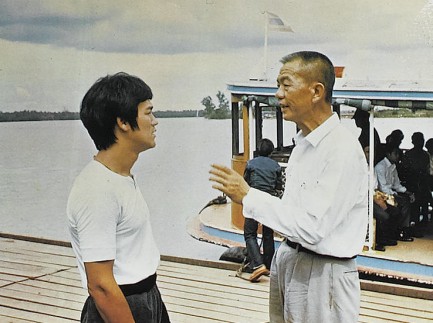 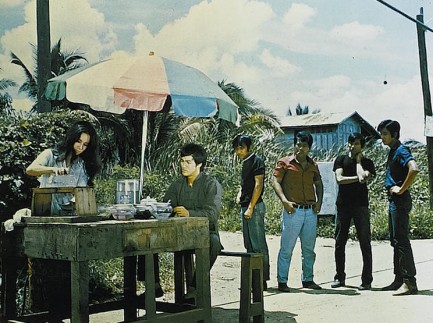 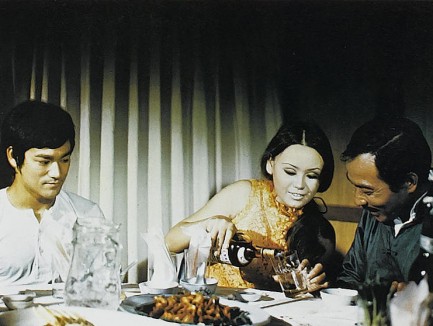 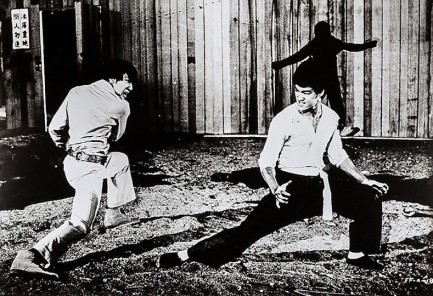 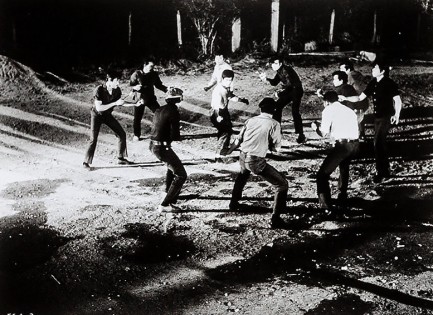 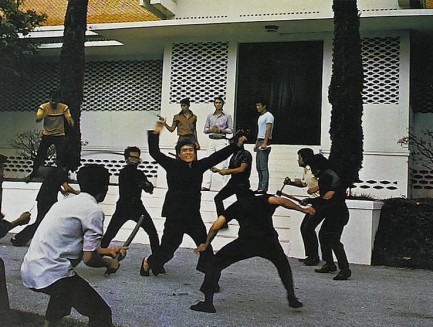 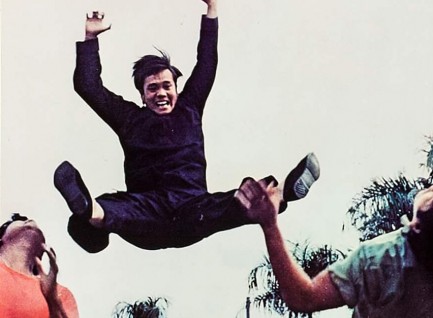 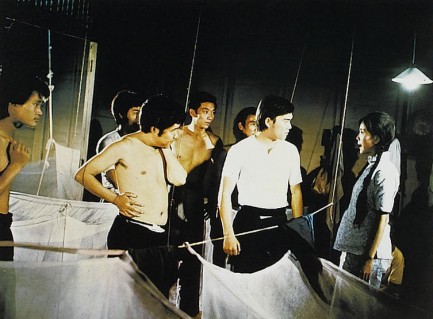 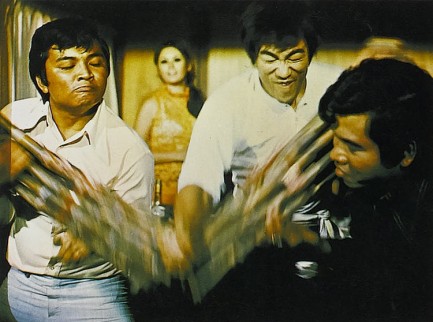 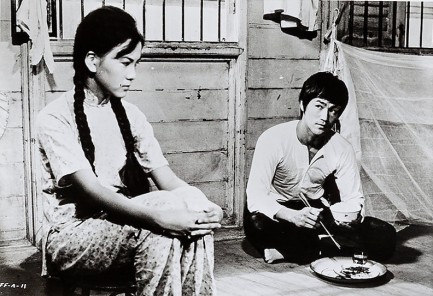 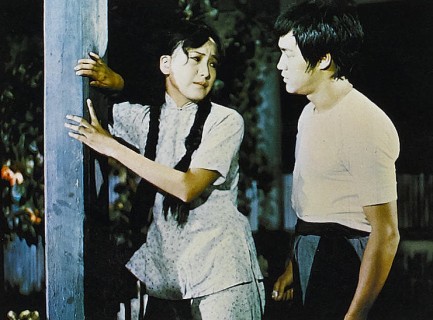   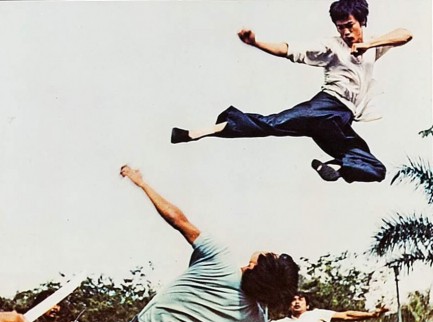 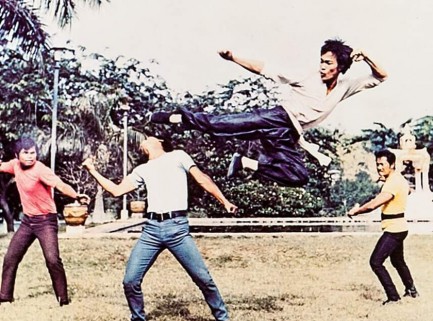 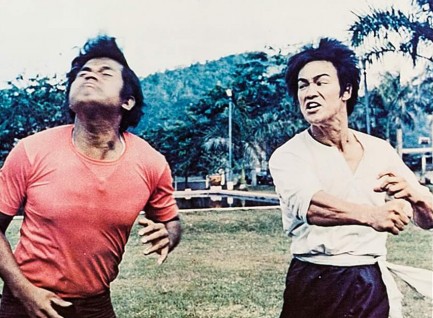 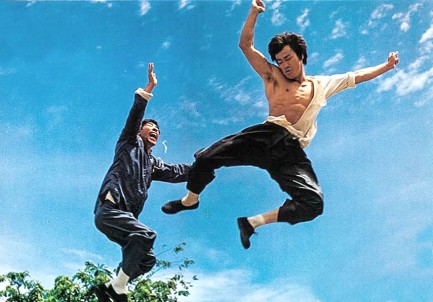 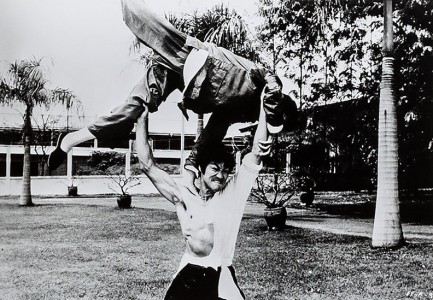 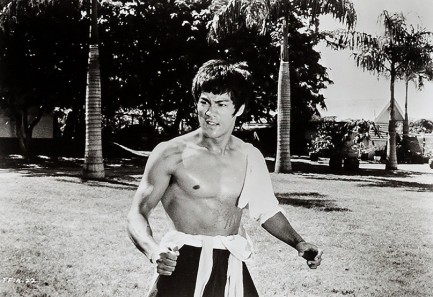 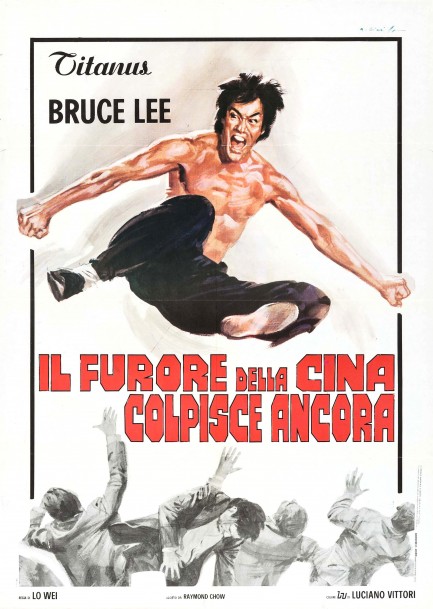
 The king has left the building. 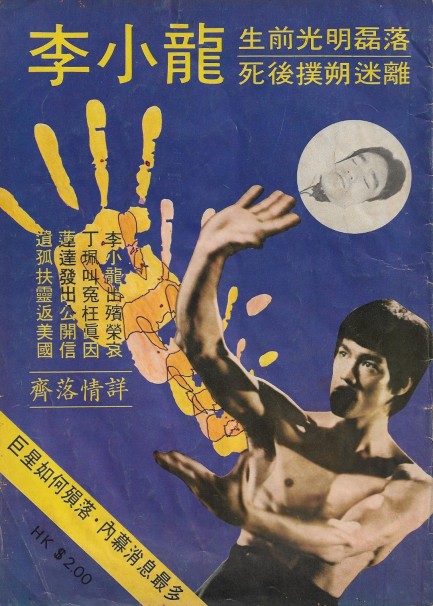
We ran across this 1974 Bruce Lee memorial magazine originally printed in Hong Kong and sold throughout South Asia and had to share it. The cover is amazing, we think, with its blue background and golden hand graphics. The interior photos aren't in color except for the insides of the the covers, but among them are some interesting ones, including childhood shots, photos of his wife Linda Emery, promo images from his movies, and a couple of shots of Lee in his coffin, which some may find morbid. We especially like the production photo of Lee and Kareem Abdul-Jabbar from Game of Death, and the shot of him with his son Brandon. The magazine is short—only 26 pages including the covers, but on the rear you get a photo medley of Lee in various modes, which is a nice way to end the collection. We have more pieces of Lee memorabilia in the website, so click his keywords at bottom if you want to check those out. 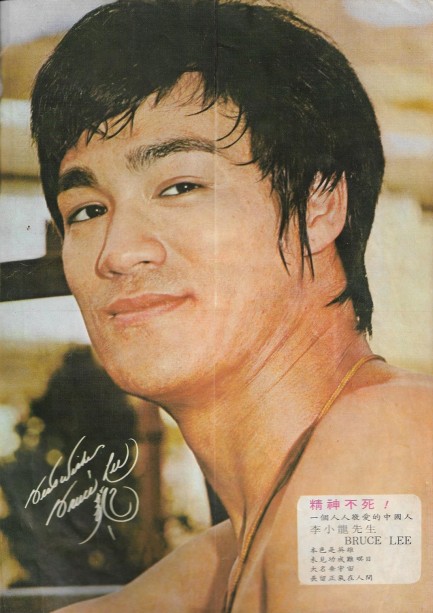 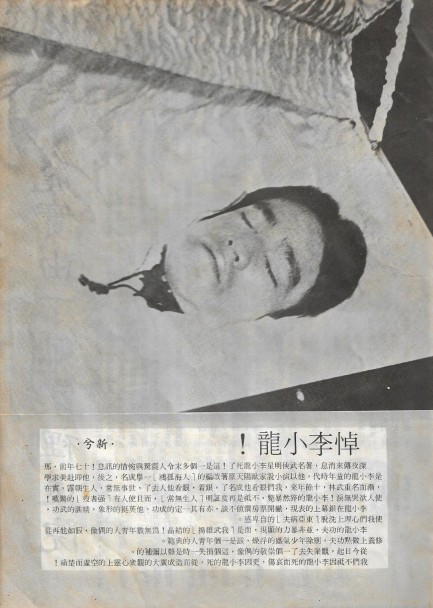 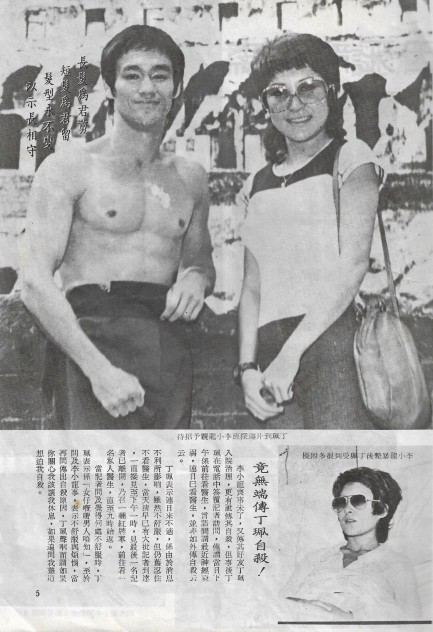 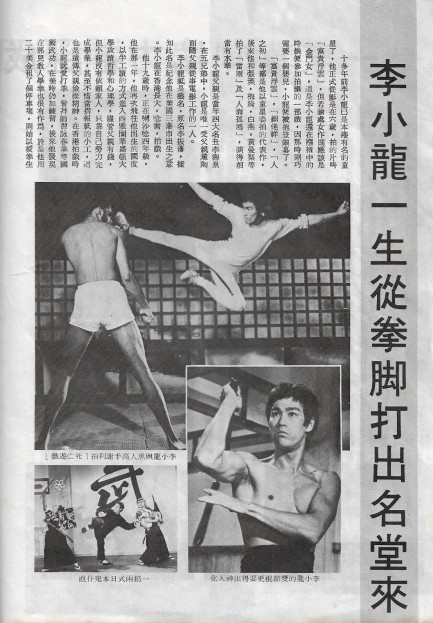 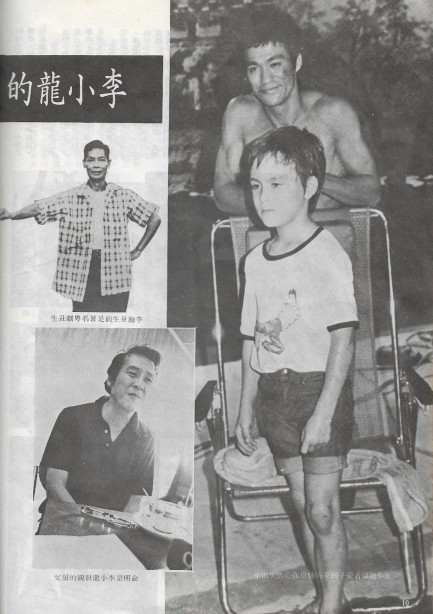 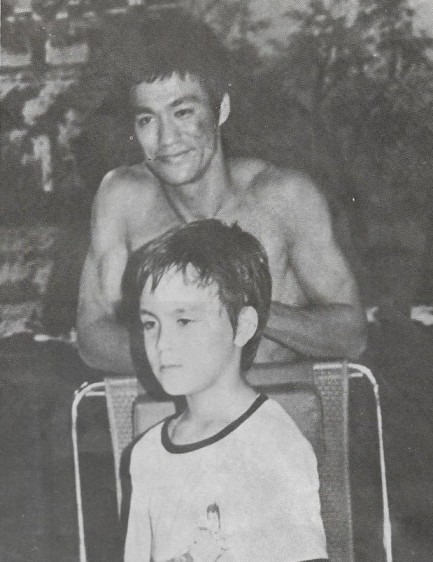 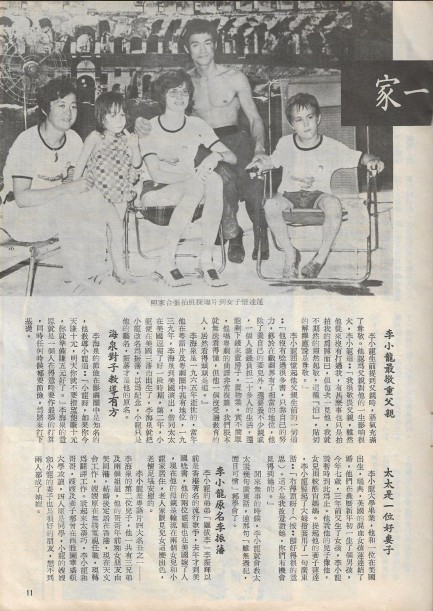 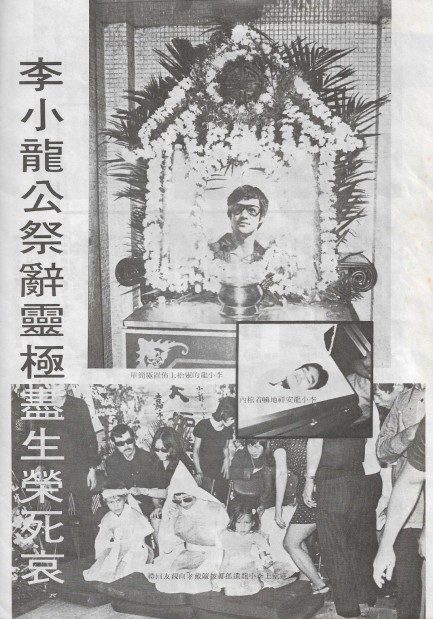 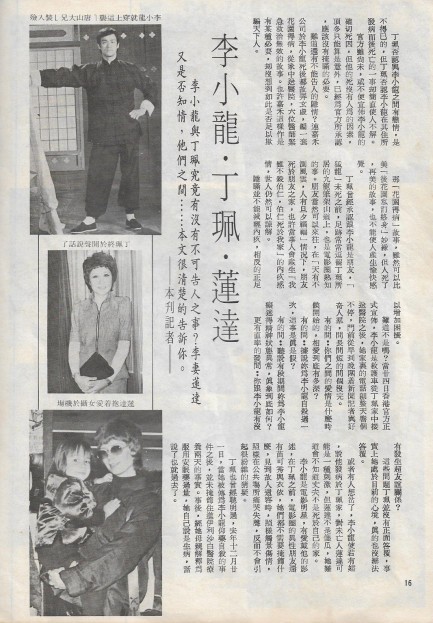  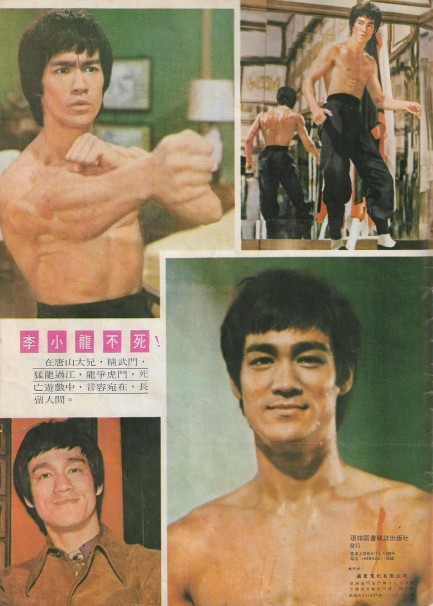 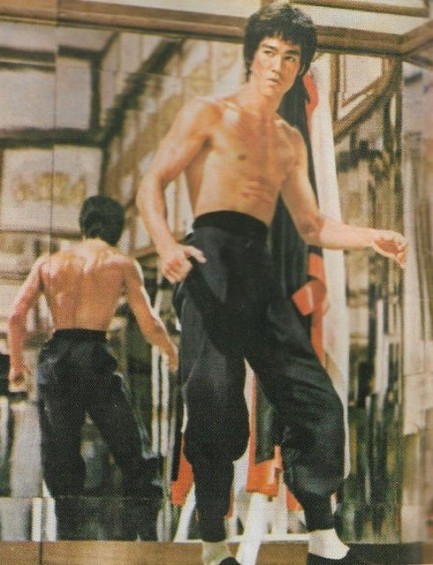 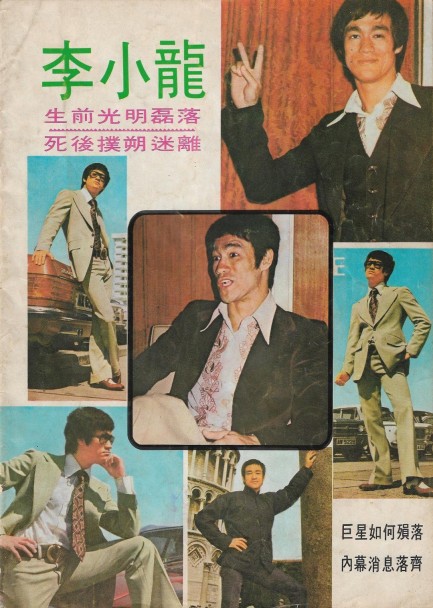
 It’s my way, Chuck, or the highway. 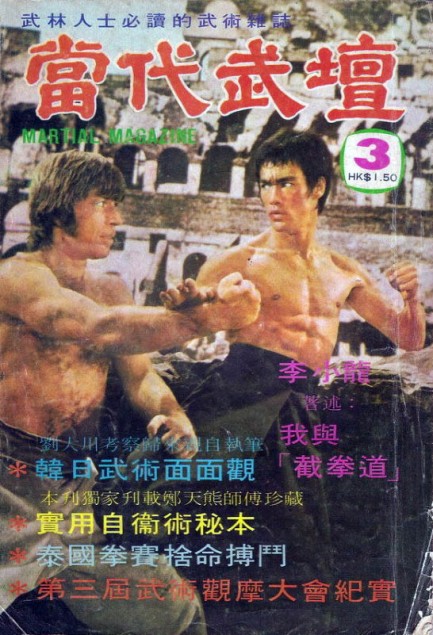
Above is a cover of Martial Magazine from Hong Kong featuring Bruce Lee and Chuck Norris. Save for their devotion to martial arts, it’s very possible that two people could not be more different—Bruce Lee was a philosophical atheist who wrote poetry and preached peace, while Norris is a fundamentalist science skeptic. Strange bedfellows indeed. The photo is from the climactic battle of 1972’s The Way of the Dragon, a pretty cool movie set mostly in Rome.
 The man with the Dragon kung fu. 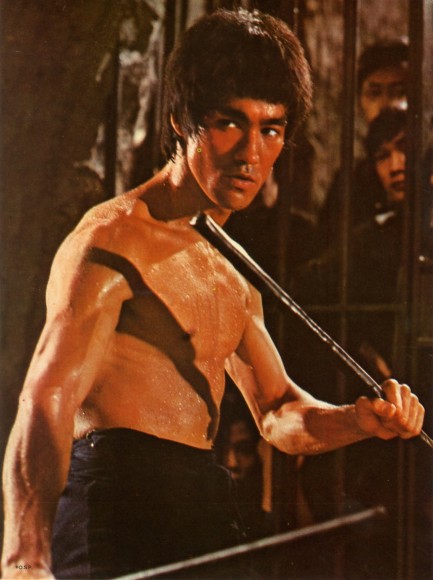
We found something quite cool yesterday—six Enter the Dragon lobby cards produced in Hong Kong and featuring the one and only Bruce Lee. Looking at them, we aren't sure they're all actually from Enter the Dragon, but that's the way they were packaged. Five of the cards are printed film frames and feature him in full ass-kicking action, but the last one, at bottom, is the true winner, showing a smiling Lee during a break in filming. Assuming these are indeed all from the set of Dragon, it would have been the spring of 1973, when Lee was on top of the world. And in that last shot he looks like it. Just a few months later, in July, he would be gone.  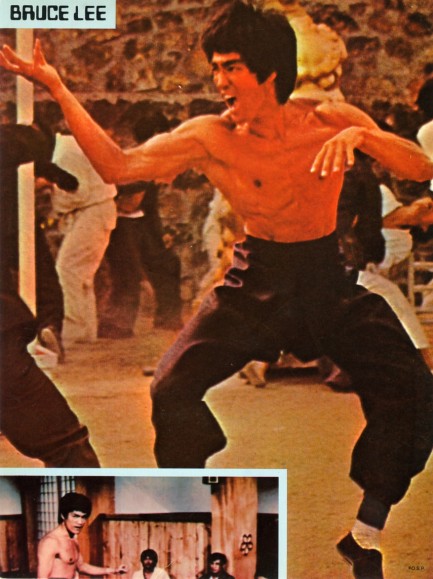 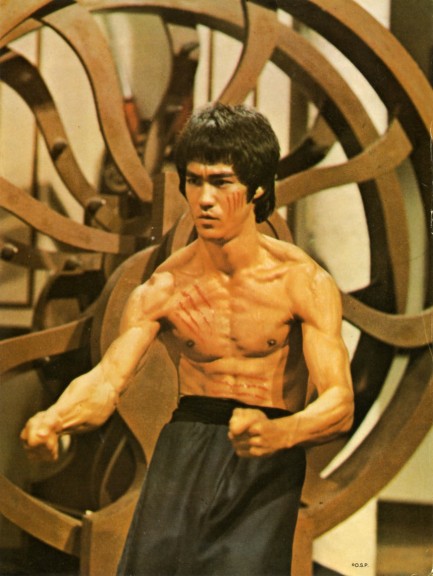 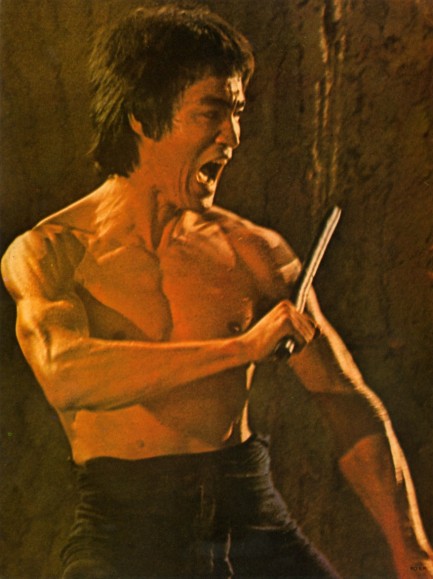 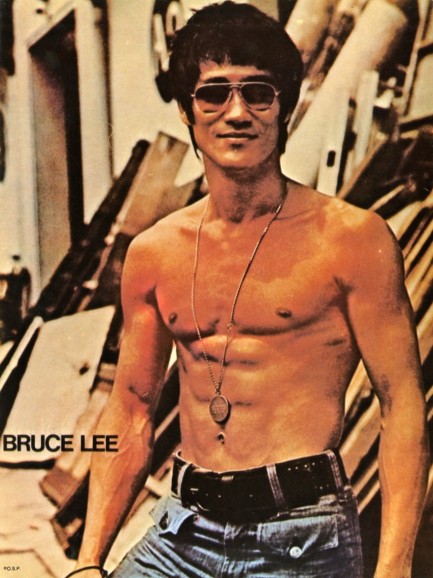
 Whatever you call it, as long as it has Bruce Lee it’s all good. 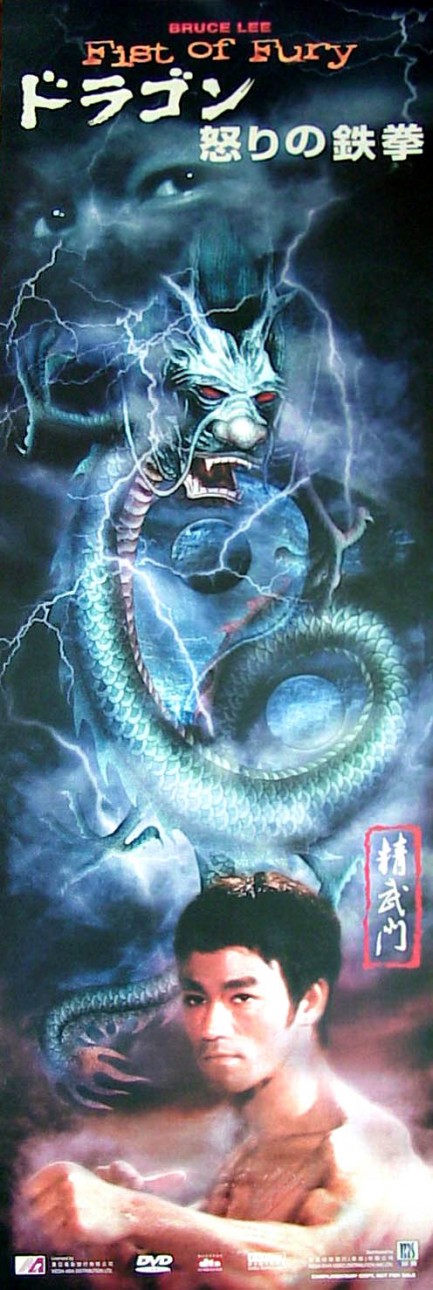
Above, a never-before-seen-online poster for Bruce Lee’s Fist of Fury, made for the DVD release around 1999 or 2000. Fist of Fury should not be confused with Fists of Fury. The latter was released in 1971 and was better known in the U.S. as The Big Boss, whereas Fist of Fury was known as The Chinese Connection as well as The Iron Hand, and its Mandarin title was Jing mo mun and its Cantonese title was Jing wu men. Got all that? Great. Fist of Fury premiered in Hong Kong today in 1972.
 My way or the highway. 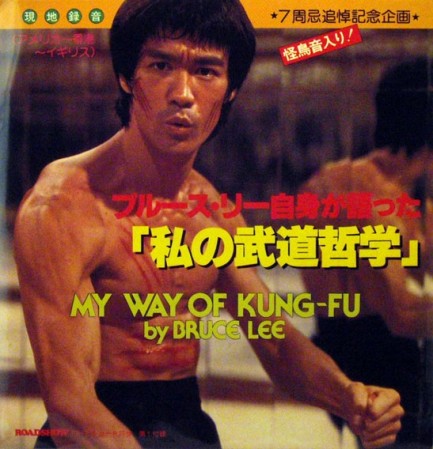
You can keep your Christmas music—we’ve been listening to Bruce Lee. On this 45 record from 1972, Bruce explains his philosophies of self-discipline and self-defense, in both English and Cantonese. Lee was popular—we all know that. But the very existence of this record speaks to the intensity of worldwide interest in the man, his movies, and his unparalleled skills at pimp smacking bad guys. Put another way—can you imagine an action star putting out a release like this today? We think not. The record would be better if Lee were the only one speaking, but every Gladys Knight needs her Pips, seemingly. You can listen to My Way of Kung-Fu here.
 Don’t love the Game, love the player. 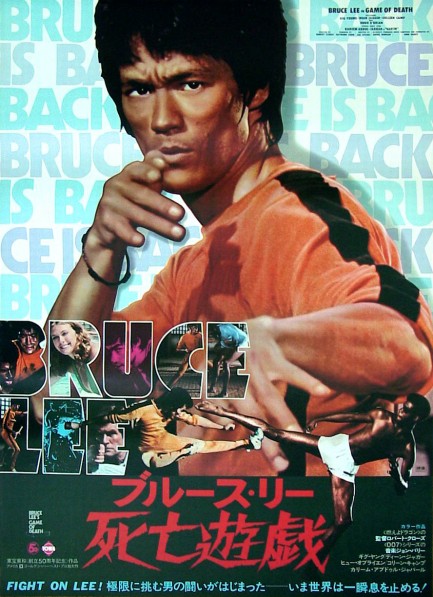
Mining dead artists for profit is a well-established (if ethically dubious) tradition. Ernest Hemingway somehow kept publishing novels after his suicide. Tupac Shakur released more albums after he was shot to death than when he was alive. And Game of Death, for which you see the Japanese promo art above, hit theaters after Bruce Lee died unexpectedly during filming.
The film's producers, who had been left with a large cash outlay and no star, cobbled together a disjointed finished product using doubles and old footage, and when the end result was unveiled to the world, everyone from Lee’s family to his die-hard fans labeled it a blight on Lee’s legacy. But we take a different view. Lee wasn’t famous because he was an actor—he was famous because he was a visual artist. His acting was always secondary, merely a convenient medium of delivery for his martial arts. Like a dead musician whose final few great songs are released on a disc filled out by mediocre live recordings and outtakes, Game of Death’s Lee footage should be judged apart from the film as a whole.
Seen in that light, you’ll be able to appreciate the fact that Lee is sublime in his last few choreographed fights, even if the filler material surrounding him is a mess. From what we’ve read, Lee’s original concept for this movie was ambitious, interweaving bits of philosophy and spirituality into a violent quest for higher consciousness in both life and martial arts. Had the project been finished, it probably would have been the greatest martial arts epic ever made. But even if the film never reached such lofty heights, we can still enjoy Lee’s last moments working in the craft he loved. Game of Death premiered today in Japan in 1978. More rare promo art below. 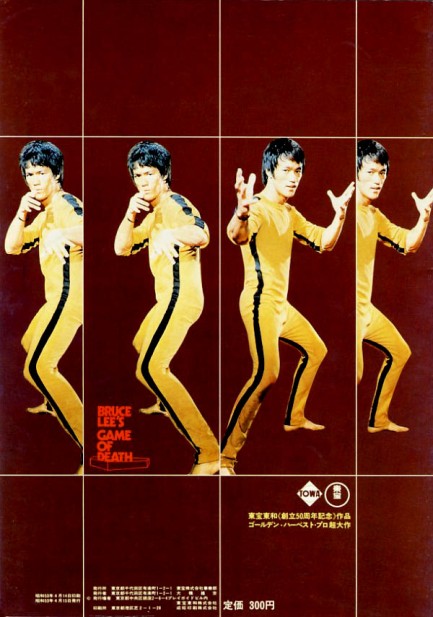  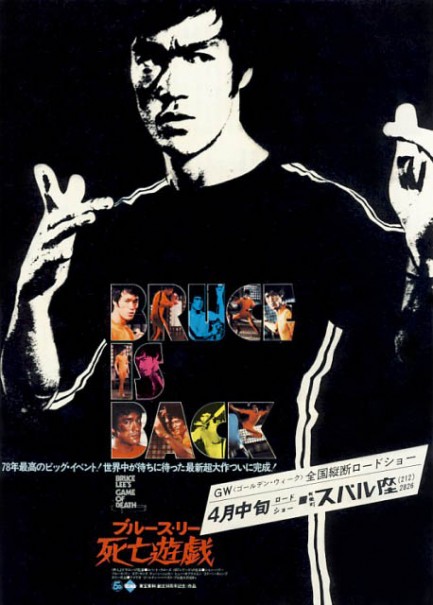 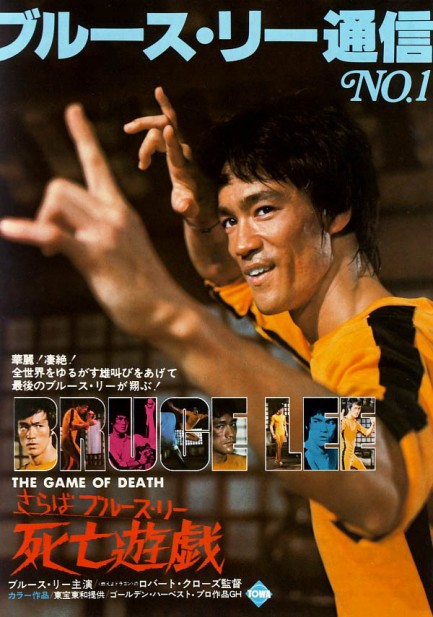 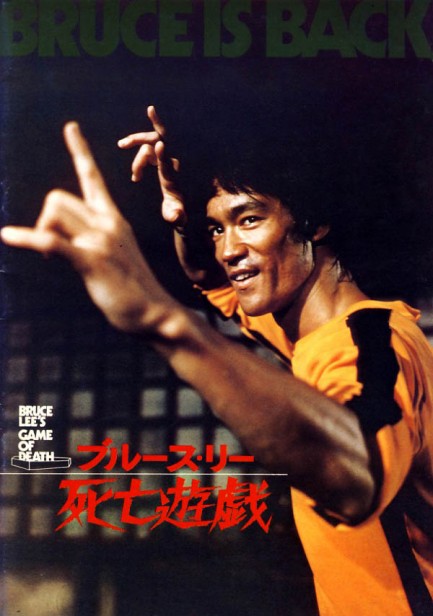

|
 |

The headlines that mattered yesteryear.
2003—Hope Dies
Film legend Bob Hope dies of pneumonia two months after celebrating his 100th birthday. 1945—Churchill Given the Sack
In spite of admiring Winston Churchill as a great wartime leader, Britons elect
Clement Attlee the nation's new prime minister in a sweeping victory for the Labour Party over the Conservatives. 1952—Evita Peron Dies
Eva Duarte de Peron, aka Evita, wife of the president of the Argentine Republic, dies from cancer at age 33. Evita had brought the working classes into a position of political power never witnessed before, but was hated by the nation's powerful military class. She is lain to rest in Milan, Italy in a secret grave under a nun's name, but is eventually returned to Argentina for reburial beside her husband in 1974. 1943—Mussolini Calls It Quits
Italian dictator Benito Mussolini steps down as head of the armed forces and the government. It soon becomes clear that Il Duce did not relinquish power voluntarily, but was forced to resign after former Fascist colleagues turned against him. He is later installed by Germany as leader of the Italian Social Republic in the north of the country, but is killed by partisans in 1945.
|

|
|

It's easy. We have an uploader that makes it a snap. Use it to submit your art, text, header, and subhead. Your post can be funny, serious, or anything in between, as long as it's vintage pulp. You'll get a byline and experience the fleeting pride of free authorship. We'll edit your post for typos, but the rest is up to you. Click here to give us your best shot.

|
|






